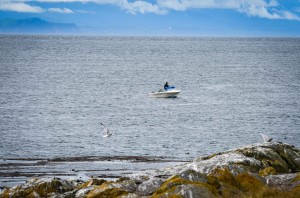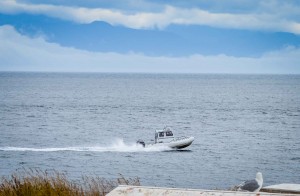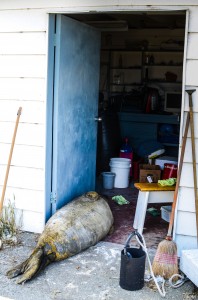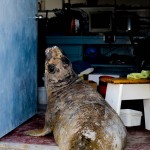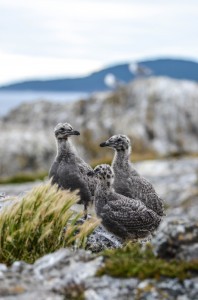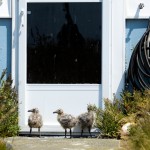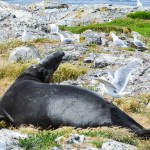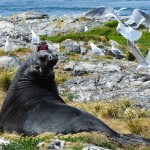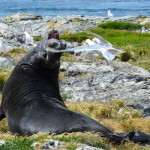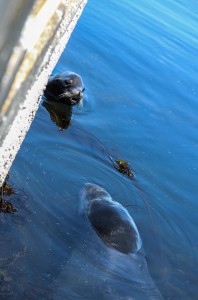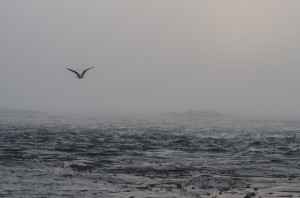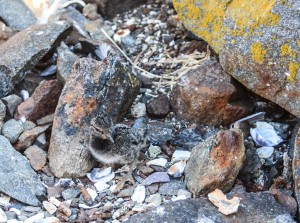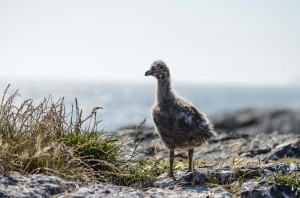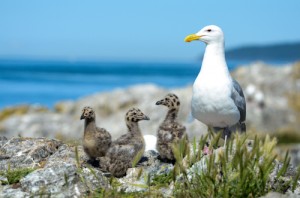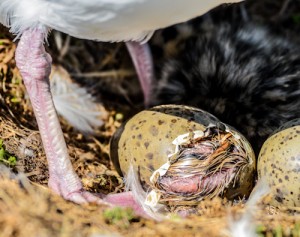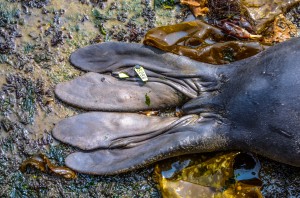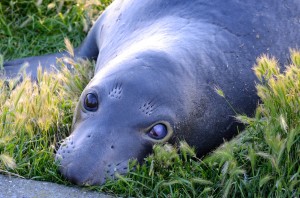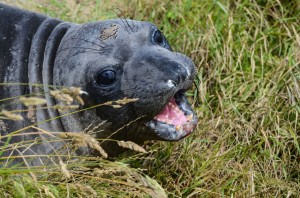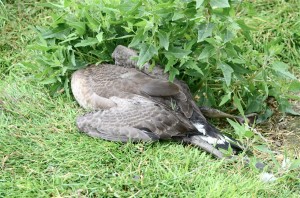Marine traffic in the reserve over the past month has increased mainly with a rise in visiting whale watchers. On days of good weather there have been as many as two dozen whale watching boats pass through the reserve. However on days like today when the wind has averaged around 30 knots, or yesterday when there was fog until late afternoon, only one boat toured through.
Whale watching boats usually abide by the rules of the reserve by not speeding and being respectful of marine mammals. But this week there were two boating infractions by private boaters. Fishing in the reserve is not permitted. Two boat renters from Pedder Bay marina, despite being reminded by marina owners of the regulations, were fishing off the southwest side of the main island.
The speed limit in the reserve is 7 knots. This white zodiac, right, sped through the reserve last week at about 15 to 20 knots. The reason for the speed limit is to create as little disturbance for the marine mammals as possible. When boats speed through the harbour seals in particular react by fleeing to the water.

